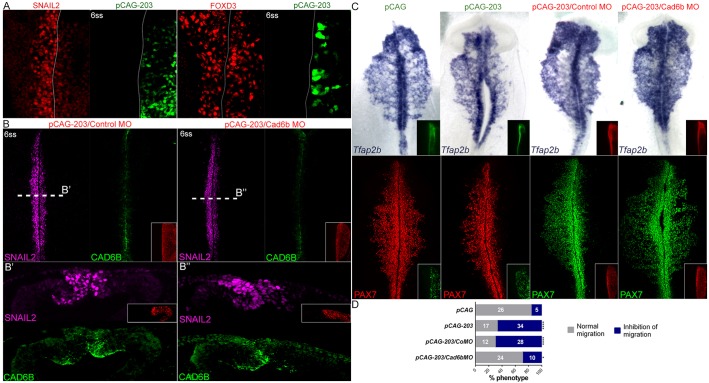Fig. 2.
miR-203 overexpression prevents NCC delamination without affecting specification. (A) Immunohistochemistry analyses on miR-203-overexpressing embryos shows reduced SNAIL2 immunostaining, but does not affect expression of the early NCC specifier FOXD3. (B) At 6 ss, co-electroporation of pCAG-203 with control MO causes downregulation of SNAIL2 and maintenance of Cad6b in the dorsal neural tube compared with the uninjected site (left). This phenotype is rescued by co-electroporation of pCAG-203 with Cad6b MO where the injected site shows similar expression of Cad6b compared with the control side (right). (B′,B″) Transverse sections at the levels shown in B. (C) In situ hybridization for Tfap2b and immunostaining for PAX7 shows inhibition of NCC migration in the pCAG-203 injected side, compared with the uninjected side of the same embryos and with embryos injected with an empty pCAG vector. This phenotype is partially rescued by the co-electroporation of cadherin 6b morpholino (Cad6b MO). (D) The percentages of embryos showing a phenotype (normal migration versus inhibition of migration) on the side injected with pCAG, pCAG-203, pCAG-203/CoMO and pCAG-203/Cad6bMO. Numbers in the graphs represent the numbers of analyzed embryos. *P<0.05 and ****P<00001 compared with the pCAG vector (contingency table followed by a χ2 test).

